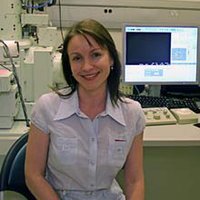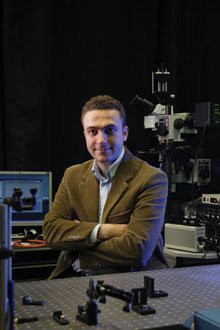Computer & electronics hardware
Aydogan Ozcan
Inexpensive chips and sophisticated software could make microscope lenses obsolete <br>

Global
Andrea Armani
Sensitive optical sensors detect single molecules

Global
Elena Shevchenko
Assembling nanocrystals to create made-to-order materials <br>

Global
Vera Sazonova
World’s smallest resonator could lead to tiny mechanical devices

Global
Adam Dunkels
Minimal wireless-networking protocols allow almost any device to communicate over the Internet <br>

